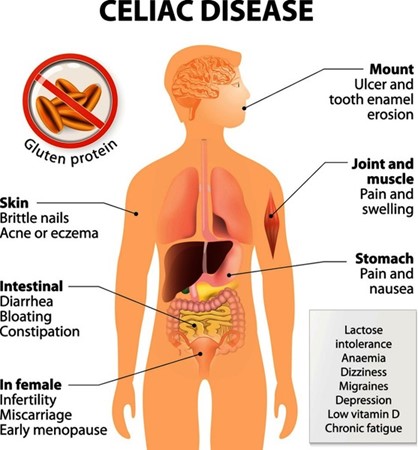A nurse is teaching the mother of a child who has cystic fibrosis and has a prescription for pancreatic enzymes three times per day. Which of the following statements indicates that the mother understands the teaching?
"My child will take the enzymes following meals."
"My child will take the enzymes to improve her metabolism."
"My child will take the enzymes 2 hours before meals."
"My child will take the enzymes to help digest the fat in foods."
The Correct Answer is D
D. "My child will take the enzymes to help digest the fat in foods."
Cystic fibrosis (CF) affects the exocrine glands, leading to thick and sticky mucus production, which can block the pancreatic ducts. As a result, children with CF have difficulty digesting fats and absorbing fat-soluble vitamins. Pancreatic enzyme replacement therapy (PERT) is prescribed to help improve fat digestion and nutrient absorption. These enzymes are taken with meals and snacks to aid in the breakdown of fats.
The other options are incorrect:
A. "My child will take the enzymes following meals." - This is the correct timing for taking pancreatic enzymes. The enzymes should be taken with meals and snacks, not following meals.
B. "My child will take the enzymes to improve her metabolism." - The purpose of taking pancreatic enzymes is not related to improving metabolism but to assist in fat digestion and nutrient absorption.
C. "My child will take the enzymes 2 hours before meals." - Taking pancreatic enzymes 2 hours before meals is not the recommended timing. They should be taken with meals and snacks to aid in fat digestion while eating.
Nursing Test Bank
Naxlex Comprehensive Predictor Exams
Related Questions
Correct Answer is D
Explanation
Cystic fibrosis (CF) is a genetic disorder that affects the production and function of certain glands, particularly those that produce mucus and sweat. One of the key aspects of CF management is addressing the pancreatic insufficiency that occurs in many individuals with CF. Due to the impairment of the pancreas, children with CF may have difficulty digesting food properly, especially fats. This can lead to malabsorption of nutrients, poor weight gain, and other nutritional deficiencies.
Pancreatic enzyme replacement therapy is a crucial part of CF management. Pancreatic enzymes are prescribed to help the child digest and absorb essential nutrients, especially fats. The enzymes are typically given with each meal and snack to aid in the breakdown and absorption of nutrients.
The other options are not correct:
A. "We will restrict the amount of salt in our child's food."
Sodium restriction is generally not a focus in CF management unless there are specific indications for it. CF patients may have increased salt losses in sweat, but dietary sodium restriction is not a primary aspect of their care.
B. "I will limit my child's fluid intake."
Fluid intake is important for children with CF to maintain hydration and prevent dehydration. There is no specific need to limit fluid intake unless there are individualized medical reasons for doing so.
C. "I will prepare low-fat meals with limited protein for my child."
Children with CF often require a high-calorie, high-protein diet to maintain adequate nutrition and growth. Restricting fat and protein intake is not typically recommended, as these nutrients are essential for a child's development and well-being. Instead, pancreatic enzymes are used to aid in the digestion and absorption of fats and other nutrients.
Correct Answer is B
Explanation
When providing teaching to a parent of a child with celiac disease, the nurse should recommend food choices that are gluten-free. Celiac disease is an autoimmune disorder triggered by the ingestion of gluten, which is a protein found in wheat, barley, rye, and their derivatives. Gluten damages the small intestine lining in individuals with celiac disease, leading to various gastrointestinal and nutritional issues.
The correct food choice for a child with celiac disease is B. Rice. Rice is naturally gluten-free and can be a safe and nutritious option for individuals with celiac disease. Other gluten-free options include corn, quinoa, oats (certified gluten-free oats), potatoes, and many fruits and vegetables.
A. Barley: Barley contains gluten, which is harmful to individuals with celiac disease. It should be avoided in the child's diet.
C. Rye: Rye also contains gluten and should be avoided in the child's diet. It can cause damage to the small intestine in individuals with celiac disease.
D. Wheat: Wheat is a primary source of gluten and is strictly off-limits for individuals with celiac disease. It is essential to avoid all wheat-containing products, including bread, pasta, and baked goods.

Whether you are a student looking to ace your exams or a practicing nurse seeking to enhance your expertise , our nursing education contents will empower you with the confidence and competence to make a difference in the lives of patients and become a respected leader in the healthcare field.
Visit Naxlex, invest in your future and unlock endless possibilities with our unparalleled nursing education contents today
Report Wrong Answer on the Current Question
Do you disagree with the answer? If yes, what is your expected answer? Explain.
Kindly be descriptive with the issue you are facing.
